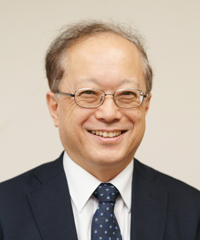It has been about eleven years since a hospital in Kumamoto started what is called the "Stork's Cradle," a baby hatch or box where unwanted babies could be left. It was greeted with praise as a possible way to reduce unfortunate incidents such as unwanted pregnancies resulting in abortion and abandoned children, but there was also criticism that it would result in a rise in "irresponsible" pregnancies and childbirth and questions about the right of children to know their birth parents.
At the time, I remember receiving phone calls from newspaper reporters asking for my opinion on this, and most questions concerned the right of children to know their birth parents. Looking back, that seems to have been the view of the reporters and newspapers at the time. I don't remember how I answered, but in the case of abortion, this was not pertinent because the child would never have been born in the first place. I think I also answered that even if the children knew their parents but were abandoned, who the parents are doesn't necessarily lead to the happiness of the child's life. But I remember feeling that the reporter's questions were a kind of cross-examination that attempted to make me say "that is an unpardonable violation of the child's right to know."
Small children are not able to express their feelings to those around them, so it is said that adults must speak out as advocates for children, but is the assumption that "children are supposed to want to know" always correct? In the past, I heard about cases in the United States in which telling children the truth on the basis of their right to know did not necessarily lead to happiness. This topic may be a bit technical, but I'd like to bring it up here.
In most genetic diseases, symptoms appear during childhood, but there is one disease called Huntington's chorea with obvious symptoms that appear in adulthood. In many cases, several years after the onset, patients experience involuntary muscle movements and become bedridden. This disease has an autosomal dominant inheritance pattern, which means that if a parent has this disorder, one out of two children (50%) will develop the disease. Today, with genetic testing, it is even possible to make a diagnosis before the onset of the disease, however, when I learned about it, diagnosis by genetic testing was not yet possible, but a particular method that could diagnose children before the onset of the disease had just been established. In the United States, this method became problematic because of the high number of suicides among young people who learned that they would develop the disease around the age of thirty. There was also the question of whether it was ethical to conduct the test on preschool-age children based on a parental decision. Negative test results are fine, but if the results are positive, the child will learn sooner or later. Even if the parents try to hide the positive test results from the child, knowing that the disease will manifest itself in thirty years can be expected to affect their attitude to child-raising. The difficult issue of medical ethics became a court case that seemingly concluded that having a child tested was not a matter to be decided by parents. Even children who were left as newborns in a baby hatch will be told the truth when they get older, but it may be difficult to maintain that all children have the right to know without any preconditions. What are your views?



 Yoichi Sakakihara
Yoichi Sakakihara










